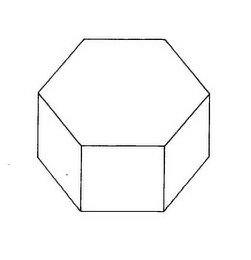Interessante decisione del 5° Board of Appeal dell’EUIPO, 7 marzo 2023, caso R 1490/2022-5, Chiever RB . v. la pagina web della pratica nel sito del’ufficio nonchè direttamente il file word on la traduzione automatica inglese (orig. olandese).
Questo il link diretto al video.
Domanda rigettata in primo grado amminstrativo per assenza di distintività ma accolta nel reclamo.
I marchi multimediali sono contemplati dal reg. di esecuzione del reg. UE 2017/1001: reg. 2018/626 art. 3.3.i), circa la modalità di rappresentazione (file audiovisivo)
Qui l’interessnte è dove si possa apporre il marchio audiovisivo.
Lo spiega l’istante:
<< – The Office shall explicitly draw the comparison with a TV spot. In most cases, a multimedia brand is not TV advertising at all and should therefore not be compared with it. It is a new type of brand, a combination of sound, images and movement. This could be a TV spot, but in most cases it is precisely not. They are videos on the internet, lead on websites, on Instagram. All moving images and sounds, to which modern consumers are fully accustomed to using their mobile phone.
– The sign in question will be used in practice, including via Facebook. Once the end has passed, a bottle of wine with a clear label appears in a new shot. Of course, the trade mark proprietor does not choose to include that bottle of wine in his trade mark, just as, in the case of a slogan, you do not, in principle, take the trade mark (the sender) with it>>.
Poi il Board osserva:
<< (5) Final remark: evolution of technology and digital marketing
72 With the evolution of technology, it cannot be excluded that multimedia brands are also effectively placed on goods. Moreover, digital packaging is already a reality.
73 For wines, it is perfectly possible, for example, that not only a QR code on the bottle, but also the wine label itself is scanned by the consumer via his smartphone and it will then see the video requested. A label can be ‘activated’ by way of words.
74 The Chamber gives an example below:
https://winerytale.com/media-release/wine-label-storytelling/” >>
Riporto poi la Conclusion:
<<75 Consumers may not have previously been accustomed to assigning a function of origin to a combination of images and sounds. This has changed with the digital evolution. As also indicated in the Common Communication on new types of marks, there is an increase in the number of signs combining images and sound used as part of market strategies, which will lead consumers to perceive them more as indications of commercial origin. The applicant also rightly points out that the multimedia mark consists of moving images and sounds to which modern consumers are entirely accustomed to their mobile phone.
76 Although the filing of films as trade marks is quite new and exceptional, that does not mean that the registration of such marks would be precluded if they could be immediately perceived as an indication of the commercial origin of the goods or services in question, so that the relevant public could, without any possibility of confusion, distinguish the goods or services of the proprietor of the mark from those with a different commercial origin (05/12/2002, T 130/01, Real People, Real Solutions, EU:T:2002:301, § 19).
77 Admittedly, although special or original characteristics are not criteria for the distinctive character of a trade mark, the mark in question must enable the public to distinguish the goods and services in question from those of other undertakings or persons (04/07/2017, T-81/16, a pair of curved strips on the side of a Tire, EU:T:2017:463, § 49).
78 The mark applied for does not only have original features (although they are not necessary), but the video also enables the public to distinguish the goods and services in question from those with a different commercial origin.
79 Therefore, in the view of the Chamber, the multimedia mark at issue is capable of fulfilling the essential function of a trade mark, which distinguishes the goods and services applied for from a different origin, and is therefore not contrary to the absolute ground for refusal laid down in Article 7 (1) (b)EUTMR.
80 In the light of the foregoing considerations, the appeal is therefore considered to be well founded and the contested decision is annulled.
(notizia e link offerti da Anna Maria Stein Thursday, April 13, 2023 in IPKat)


